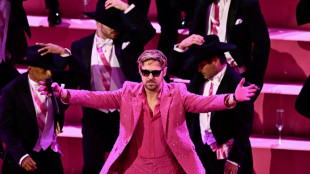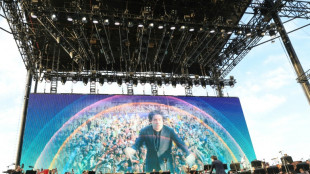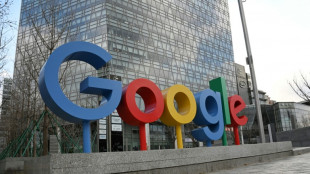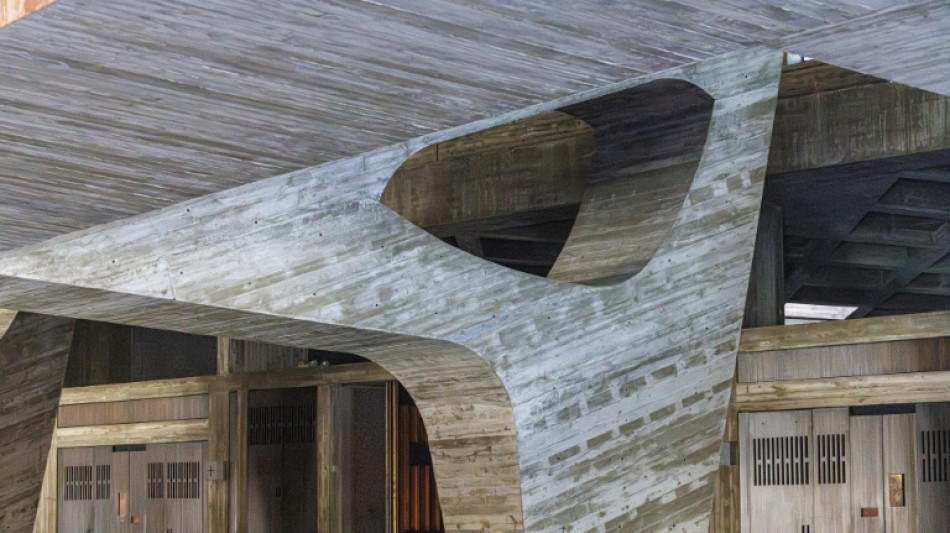
-
 Nuggets edge Clippers in NBA playoff overtime thriller, Pacers thump Bucks
Nuggets edge Clippers in NBA playoff overtime thriller, Pacers thump Bucks
-
Unbeaten Miami edge Columbus in front of big crowd in Cleveland

-
 Kim takes one-shot lead over Thomas, Novak at RBC Heritage
Kim takes one-shot lead over Thomas, Novak at RBC Heritage
-
Another round of anti-Trump protests hits US cities
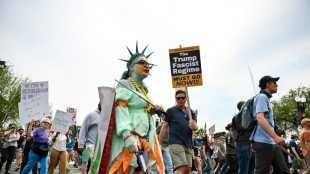
-
 'So grateful' - Dodgers star Ohtani and wife welcome first child
'So grateful' - Dodgers star Ohtani and wife welcome first child
-
PSG maintain unbeaten Ligue 1 record, Marseille back up to second

-
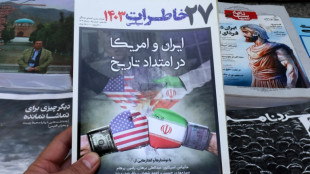 US, Iran report progress in nuclear talks, will meet again
US, Iran report progress in nuclear talks, will meet again
-
US Supreme Court intervenes to block Trump deportations

-
 Hamas armed wing says fate of US-Israeli captive unknown
Hamas armed wing says fate of US-Israeli captive unknown
-
Pacers thump Bucks to open NBA playoffs

-
 Sabalenka reaches Stuttgart semis as Ostapenko extends Swiatek mastery
Sabalenka reaches Stuttgart semis as Ostapenko extends Swiatek mastery
-
Zelensky says Ukraine will observe Putin's Easter truce but claims violations
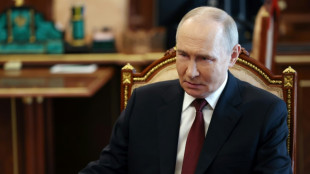
-
 'Fuming' Watkins fires Villa in bid to prove Emery wrong
'Fuming' Watkins fires Villa in bid to prove Emery wrong
-
DR Congo boat fire toll revised down to 33

-
 England thrash Scotland to set up France Grand Slam showdown
England thrash Scotland to set up France Grand Slam showdown
-
Verstappen's Red Bull 'comes alive' to claim record pole in Jeddah

-
 McTominay fires Napoli level with Inter as Conte fuels exit rumours
McTominay fires Napoli level with Inter as Conte fuels exit rumours
-
Rajasthan unleash Suryavanshi, 14, as youngest IPL player but lose thriller

-
 Man City boost top five bid, Aston Villa thrash in-form Newcastle
Man City boost top five bid, Aston Villa thrash in-form Newcastle
-
Villa rout Newcastle to rekindle bid to reach Champions League

-
 Dumornay gives Lyon lead over Arsenal in Women's Champions League semis
Dumornay gives Lyon lead over Arsenal in Women's Champions League semis
-
Trans rights supporters rally in London, Edinburgh after landmark ruling

-
 'We have to wait': Barca's Flick on Lewandowski injury fear
'We have to wait': Barca's Flick on Lewandowski injury fear
-
Bordeaux-Begles backups edge Pau to close in on Top 14 summit

-
 Trans rights supporters rally outside in London, Edinburgh after landmark ruling
Trans rights supporters rally outside in London, Edinburgh after landmark ruling
-
PSG beat Le Havre to stay on course for unbeaten Ligue 1 season

-
 Man City close in on Champions League with Everton late show
Man City close in on Champions League with Everton late show
-
14-year-old Vaibhav Suryavanshi becomes youngest IPL player

-
 Barca make stunning comeback to beat Celta Vigo in Liga thriller
Barca make stunning comeback to beat Celta Vigo in Liga thriller
-
Zverev sets up birthday bash with Shelton in Munich

-
 Man City boost top five bid, Southampton snatch late leveller
Man City boost top five bid, Southampton snatch late leveller
-
US Supreme Court intervenes to pause Trump deportations

-
 Alcaraz and Rune race into Barcelona final
Alcaraz and Rune race into Barcelona final
-
US, Iran to hold more nuclear talks after latest round
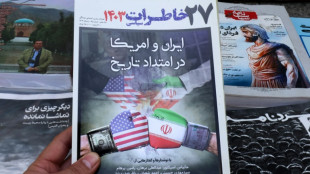
-
 Man City close in on Champions League thanks to Everton late show
Man City close in on Champions League thanks to Everton late show
-
Bayern close in on Bundesliga title with Heidenheim thumping

-
 Tunisia opposition figures get jail terms in mass trial
Tunisia opposition figures get jail terms in mass trial
-
Putin announces 'Easter truce' in Ukraine
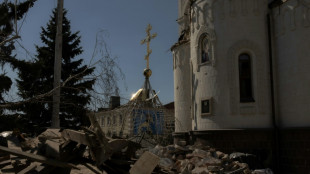
-
 McLaren duo in ominous show of force in Saudi final practice
McLaren duo in ominous show of force in Saudi final practice
-
Afghan PM condemns Pakistan's 'unilateral' deportations

-
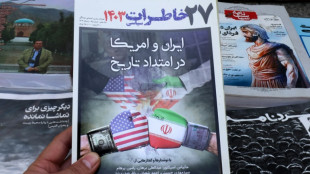 Iran says to hold more nuclear talks with US after latest round
Iran says to hold more nuclear talks with US after latest round
-
Comeback queen Liu leads US to World Team Trophy win

-
 Buttler fires Gujarat to top of IPL table in intense heat
Buttler fires Gujarat to top of IPL table in intense heat
-
Unimpressive France stay on course for Grand Slam showdown

-
 Shelton fights past Cerundolo to reach Munich ATP final
Shelton fights past Cerundolo to reach Munich ATP final
-
Vance and Francis: divergent values but shared ideas
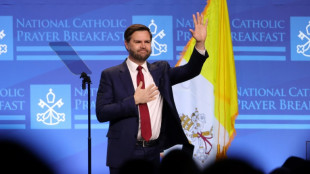
-
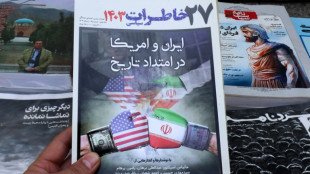 Iran, US conclude second round of high-stakes nuclear talks in Rome
Iran, US conclude second round of high-stakes nuclear talks in Rome
-
Dumornay gives Lyon first leg lead over Arsenal in women's Champions League semis

-
 Trans rights supporters rally outside UK parliament after landmark ruling
Trans rights supporters rally outside UK parliament after landmark ruling
-
Rune destroys Khachanov to reach Barcelona Open final


What is Brutalism? And why do architects hate 'The Brutalist'?
"The Brutalist," an epic drama loosely inspired by the life and work of architect Marcel Breuer, is one of the favorites for Sunday's Oscars.
But the film has drawn scorn from design experts, who accuse it of glaring errors, and question whether its main character is even a Brutalist architect.
Here are five things to know about the film, which is up for 10 Academy Awards including best picture:
- Who was Marcel Breuer? -
Director Brady Corbet has said his protagonist Laszlo Toth is an "amalgamation" of several famed architects, most notably Breuer.
Like the fictional Toth, Breuer was born in Hungary, honed his skills at inter-war Germany's influential Bauhaus school, and immigrated to America.
Both designed iconic chairs before turning their focus to grand buildings. Born Jewish, each was commissioned to construct giant Christian buildings in remote parts of the United States that become their masterpieces.
Corbet has said a book about Breuer's work on Saint John's Abbey, in rural Minnesota, was a key inspiration for the film.
Breuer is also known for designing parts of Paris's UNESCO headquarters, New York's Whitney Museum of American Art, and the Pirelli Tire Building in Connecticut.
- What is brutalism? -
Brutalism is a polarizing design style that emerged in the 1950s post-war reconstruction of Europe.
It is recognizable for its exposed, unembellished concrete, and giant, bold geometric forms.
The term is believed to come from "beton brut," French for raw concrete.
Surprisingly, almost no Brutalist architecture appears in "The Brutalist" -- until we glimpse Toth's completed masterpiece at the end of the three-and-a-half-hour film.
In a podcast episode entitled "Why The Brutalist is a Terrible Movie," design critic Alexandra Lange said the filmmakers "say they read all these books on Brutalism, but absolutely none of that is used to any dramatic purpose or really seems to have been absorbed."
Victoria Young, a professor at the University of St Thomas, told AFP that the building we see at the end is not even Brutalist, but early modernist.
"I'm like, 'You're kind of missing the whole timeline here," she said.
- What about the timeline? -
Experts have pointed out other ways in which the film distorts history.
In the film, Toth is a Holocaust survivor who struggles for work and queues for free bread on arrival in post-war America, before his talents are eventually spotted by a wealthy benefactor.
In reality, Bauhaus alumni like Breuer and Walter Gropius crossed the Atlantic in the 1930s, before the war. They arrived as globally famous professionals, welcomed into prestigious posts at places like Harvard University.
Modernist architecture was deeply established and fashionable in the United States long before the film's setting.
"As an architectural historian, my head is still spinning apart from watching that movie," said Young.
Toth is presented as a devoutly religious heroin addict. Breuer was sober and secular.
- Any other controversies? -
"The Brutalist" editor David Jancso said artificial intelligence was used to make renderings of Toth's buildings and blueprints. (AI, which is both increasingly used and loathed by many in Hollywood, also sharpened up the actors' Hungarian accents.)
Corbet swiftly clarified the blueprint designs were hand-drawn.
But he said the technology was used to create "intentionally... poor digital renderings circa 1980" for the movie's epilogue.
- Will it matter? -
"The Brutalist" is a frontrunner for best picture.
And the criticisms of it pale in comparison to the storm surrounding "Emilia Perez," over its star's offensive social media posts.
Robert McCarter, architect and author of monograph "Breuer," said the film's occasional historical distortion "doesn't bother me."
"They're just using his biography conveniently... I think it's fine," he told AFP.
What of the monks who pray each day in Saint John's Abbey, the movie's supposed inspiration?
Alan Reed admitted the supposed Brutalism of the film's title reminds him of "Russian modern buildings... that look like gun parapets" or "a bunch of boxes piled up," rather than his extraordinary church.
Still, he said, his fellow monks are "quite excited" by the extra attention their home is receiving.
E.Gasser--VB

